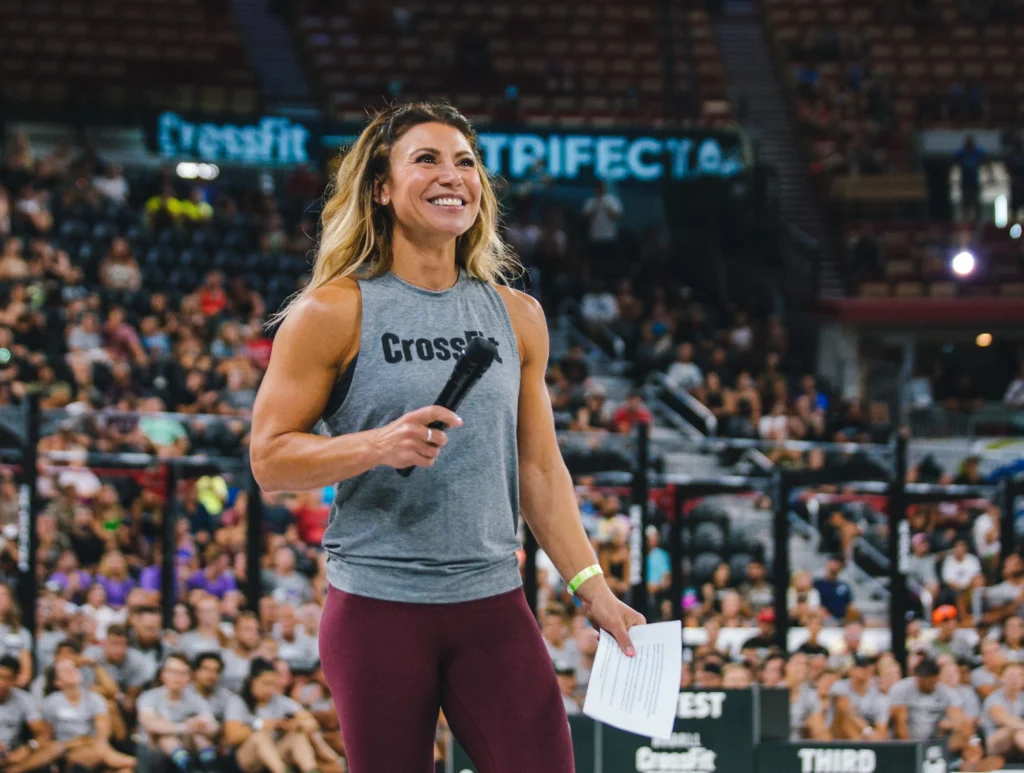How CrossFit Uses Community To Grow its Fitness Empire

CrossFit execs point to two things as driving forces behind the brand’s explosive growth: intense workouts and the power of community
There are very few brands in fitness that have been around for over twenty years, and even fewer whose growth has continued – even accelerated – into their third decade of existence.
CrossFit, the hardcore fitness concept founded by Greg Glassman in 2000, is one of those select few. For all the company’s turbulence as of late, CrossFit is still one of the industry’s top dawgs, and the brand is seemingly growing faster than it ever has. At the start of 2021, there were around 9,400 CrossFit affiliate gyms worldwide. Today, there are over 14,000 locations and counting, with over 5 million people practicing CrossFit.
Asked what’s allowed CrossFit to stay on top for so long, Austin Malleolo, the brand’s senior director of strategy & operations for affiliates, points to two things: intense workouts and the power of community.
“When we think about what makes CrossFit unique, it’s the consistent pursuit of intensity and the unique community,” Malleolo tells Athletech News.
CrossFit isn’t like most other fitness brands; it celebrates hard work in a fitness culture that’s increasingly dominated by biohacks and get-rich-quick schemes. Grueling workouts filled with deadlifts, squats, power cleans and timed runs are prescribed rather than juice detoxes, muscle-building bodysuits and 20-minute-ab programs.
“At the very base level, the CrossFit methodology is so effective, and things that really work tend to be sticky,” Malleolo says, noting that with CrossFit, people can actually track their progress over time and see improvement in their numbers, which drives engagement.
“Results are addicting, so people come back,” he says.

But just doing hard things and getting better at them over time isn’t enough to drive long-term adherence; if it were, the global population would be in better shape and the fitness industry wouldn’t be constantly searching for new ways to engage the 80% of the population that doesn’t work out on a consistent basis.
What CrossFit has done better than just about any fitness brand in the world is build community, the power and reach of which can be seen at events like the CrossFit Games, on social media platforms like Reddit, and most importantly, in affiliate gyms around the world.
Community, at the end of the day, is what drives member engagement and retention, which are the biggest pain points for most fitness companies.
“It’s very hard to continually work hard alone,” Malleolo notes. “When you walk into a CrossFit affiliate, you see 10 or 15 people working really hard, it’s an inspiring moment. If you’re alone, you’re going to move a little slower because that’s just the nature of the human psyche, no matter how mentally disciplined you are.”
Affiliate Model Drives Growth
A major reason the CrossFit community has grown so large and spread so quickly is the unique way the brand opens new locations. CrossFit doesn’t franchise like most fitness brands; instead, the company licenses its name to individual gym owners under an “affiliate” system. Fitness enthusiasts and entrepreneurs pay just $3,000 a year for the right to open a CrossFit affiliate gym, an initial investment fee that’s a fraction of the hefty franchise fees charged by most boutique fitness brands and gym chains.
The affiliate model itself was created almost by accident – it effectively started around 2007 after a CrossFit devotee approached Glassman about opening up his own gym. But since then, CrossFit has embraced the system with open arms.
“It created a relatively low barrier to entry compared to a franchise to open a business and share the methodology and the community,” Malleolo says of the affiliate model. “That’s really allowed this growth to permeate almost at an organic level.”
CrossFit supports its booming affiliate system with a dedicated staff of over 30 staff who assist gym owners at the regional, market and even country levels. Crossfit also hosts “mastermind roundtables” where affiliate owners can network, socialize and share best practices. New affiliate gym owners also get access to CrossFit’s “Affiliate Starter Kit,” an interactive course designed to help owners and coaches build their business.

Coaches Learn the CrossFit Way
Due to its low financial barrier to entry, absentee ownership isn’t nearly as common in CrossFit as it is in fitness brands that franchise. In many CrossFit gyms around the world, the coach you see in class is also the owner and operator. That type of connection between member and owner is rare, at least for brands the size and scale of a CrossFit.
Since owners and coaches are often one and the same, CrossFit requires that all affiliate owners obtain a “Level 1 Certificate” before they can open their gym. During the Level 1 course, soon-to-be affiliate owners learn the ins and outs of the CrossFit methodology through two days of classroom instruction, small-group training sessions and coach-led workouts.
Beyond just learning how to teach a proper squat or deadlift, the concept of community is central to the Level 1 course, as new CrossFit owners quickly learn what the ethos of CrossFit is all about – hard work done with the support and encouragement of your peers.
Nicole Carroll, director of training and education at CrossFit, calls the Level 1 Course a “beautiful microcosm” of the brand’s broader approach to community building.
“When the workout ends, and everybody comes together to discuss their experience, there’s suddenly a different feeling in the room,” Carroll says. “Eight hours ago, this was a quiet, nervous group of strangers, mostly keeping to themselves, unsure about what challenges the day would bring. Post workout, we see a community created through a day of hard work.”
“Everyone takes that sense of belonging, of community, back home to their garage, school, gym or CrossFit affiliate, creating a self-perpetuating force that permeates CrossFit culture,” she adds.

Embracing the Imitators
Whether you love it or hate it, CrossFit has spawned many copycat concepts in boutique fitness, as brands new and old try to recreate the special sauce that’s made the Boulder, Colorado, company so popular across the globe. The growth of CrossFit has also fundamentally changed the way big-box gyms across the country are laid out; Olympic lifting platforms, plyometric boxes and turf layouts have taken the place of stair masters and ellipticals at health clubs big and small.
“I think the beauty of what CrossFit has done is that it’s allowed a lot of other small boutique fitness entities to pop up,” Malleolo says. “We also see traditional gyms that now have beautiful, as they call them, ‘functional fitness’ spaces.’That didn’t exist five or six years ago.”

Despite the newfound competition, CrossFit isn’t worried about losing ground. If anything, Malleolo says the fitness industry’s embrace of functional fitness and intense workouts is a good thing for the brand, since more people may get exposed to the CrossFit way of life.
The brand’s real competitors, he says, are those who try to put down intensity as an ignoble pursuit. That view used to be more common in the fitness industry, but things are changing.
“Thankfully, that has changed over the last five years, where now we see a significant amount of boutique fitness gyms that say, ‘This is tough, you’re going do some hard things, but we’re going to help you along the way,’” Malleolo notes. “If they can reach someone we couldn’t, then over time, maybe that person becomes a CrossFit member.”



